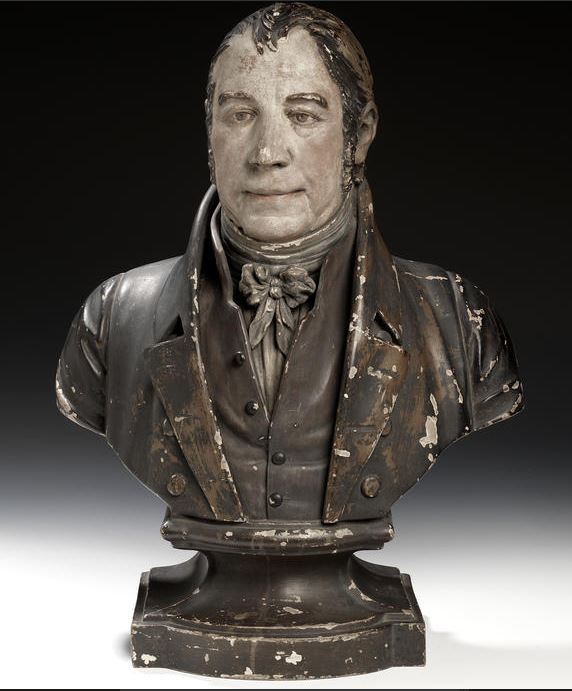Leeds horses are technical accomplishments in that their thin earthenware legs support a large body. Just think how easily those skinny legs could have buckled or broken in the kiln...not to mention the risk of damage in the ensuing two centuries. The very earliest Leeds horses were made to stand on flat bases, usually with chamfered corners and a molded leaf frieze around the edges. You can see this base form on the horse below (decorated in underglaze colors, photo courtesy of Bonhams.) The horse sold at Bonhams some years ago, and it was marked beneath 'J + Medcalf 1821'. Flattish bases of this form were soon found to distort in the kiln and were quickly replaced with a higher base, such as the one we saw on the first horse.
The Leeds horse that a collector tells me is about to canter out of John Howard's stock was particularly unusual. It had been cold-painted to resemble a bronze horse standing on a marble base. The result is really stunning.
"This horse was in my family for approx 160 years it was my great grandfathers then my grandmothers my mothers then mine it has had no restoration to its legs/ feet, ie thin cracks(at two legs) the only restoration was its ears they were knocked off one night nearly 100years ago when a great uncle came in drunk waving a walking stick about and knocked them off".

But even without that letter you can see that the paint on the horse has worn ever-so gently, in a manner not consistent with restoration. Rather, it has been touched by time.
Several other examples of this bust are recorded (the Potteries Museum, the British Museum). A Wood family member recently told me that she recollects such a bust in her home when she was a child. One of her uncles used it as a resting place for his hat at the end of each day! The bust above sold at Bonhams some years ago, and the catalog noted that this is the only known three-dimensional portrayal of an early potter done in his lifetime. I would love to own it. Talk about touching the past!

















